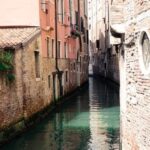Italy, with its rich history, vibrant culture, and stunning landscapes, has long been a dream destination for many Americans. The allure of this Mediterranean country can be felt in its iconic cities like Rome, Florence, and Venice, as well as its picturesque countryside dotted with charming hilltop towns and vineyards.
Whether you are planning a solo adventure, a romantic getaway, or a family vacation, this guide aims to provide American travelers with valuable insights and tips to make the most of their journey through the Bel Paese.
In this comprehensive guide to traveling in Italy, we will cover everything from practical considerations such as visa requirements, passports, and travel insurance, to more nuanced aspects such as choosing the right time to visit based on weather conditions and local festivals. We will explore transportation options within Italy, including flights and airports. Additionally, we will delve into the must-see destinations that showcase Italy’s breathtaking landscapes – from the bustling streets of Rome to the enchanting canals of Venice.
Beyond visiting famous landmarks and beautiful locations, immersing in Italian culture is an essential part of any traveler’s experience. We will provide recommendations on food and wine experiences that will delight even the most discerning American palate. Art enthusiasts will also find inspiration in Italy’s world-class museums and galleries.
Furthermore, we understand that communication can sometimes pose challenges while traveling abroad. That’s why we have included essential Italian phrases and tips for effective communication during your stay.
While exploring Italy’s treasures is undoubtedly exciting, it is also important to familiarize yourself with cultural etiquette to fully appreciate the local customs. We will share dos and don’ts for experiencing Italy like a local. Additionally, we have included insightful safety tips to help you avoid scams, pickpockets, and tourist traps that unfortunately tend to target unsuspecting travelers.
As your Italian adventure draws to a close, we want to ensure you create lasting memories by suggesting unique souvenirs and activities that capture the essence of this remarkable country. Finally, we invite you to reflect on your journey and start planning your next Italian adventure, for Italy has a way of captivating the hearts of travelers, leaving them yearning to return again and again.
Preparing for your Italian Adventure
When planning your trip to Italy, there are several important things to consider before you embark on your Italian adventure. This section will guide you through the necessary preparations such as visa requirements, passports, and travel insurance.
Visa Requirements
Before traveling to Italy, American visitors should familiarize themselves with the visa requirements. Fortunately, for most American tourists, a visa is not required for stays in Italy that are less than 90 days. However, it’s important to ensure that your passport is valid for at least six months beyond your planned departure date. Additionally, make sure to check if there are any specific entry requirements or restrictions due to COVID-19 before your departure.
Passports
A valid passport is essential when traveling to Italy. It is recommended to carry a color copy of your passport’s main page with you while exploring the country and keeping the original document secure at your accommodation. It’s also wise to make a digital copy of your passport and store it in a secure cloud storage or email it to yourself as an additional backup.
Travel Insurance
Having travel insurance is highly recommended when visiting Italy or any foreign country. Travel insurance can provide financial protection in case of unexpected events such as medical emergencies, trip cancellations, lost luggage, or other unforeseen circumstances. Before purchasing travel insurance, carefully review the policy details including coverage limits and exclusions ensuring it meets your needs during your time in Italy.
By taking care of these three important aspects – visa requirements, passports, and travel insurance – you will be well-prepared for an enjoyable and stress-free Italian adventure. Now that you have completed this crucial part of the preparation process let’s move on to selecting the right time to visit Italy in the next section.
Choosing the Right Time to Visit
Italy is a country that boasts a rich and diverse culture, stunning landscapes, and a wealth of historical sites. When planning your trip to Italy, it is important to consider the best time to visit based on weather, local festivals, and crowds. This section will provide you with some valuable insights to help you make an informed decision.
Weather
One of the key factors to consider when deciding on the best time to visit Italy is the weather. The country experiences a Mediterranean climate, which means mild winters and hot summers. However, the weather can vary significantly depending on which region you are visiting. For example, northern regions such as Milan and Venice can be quite cold in the winter months, while cities like Rome and Naples are generally milder.
The summer months from June to August tend to be the most popular time for tourists to visit Italy due to warm temperatures and longer daylight hours. However, this also means that many popular tourist attractions can be extremely crowded during this time. If you prefer milder temperatures and fewer crowds, consider visiting in the shoulder seasons of spring (April-May) or autumn (September-October). These months offer pleasant weather with fewer tourists.
Local Festivals
Italy is renowned for its vibrant festivals and celebrations throughout the year. From religious processions to music festivals, there is always something happening in different parts of the country. If experiencing local culture and traditions through festivals is high on your list of priorities, it’s worth considering timing your visit accordingly.
For example, if you’re interested in witnessing traditional parades or carnivals like Carnevale di Venezia in Venice or Il Palio in Siena, plan your trip around these events. Keep in mind that festivals can attract large crowds so booking accommodations well in advance is advisable during these times.
Crowds
Crowds can significantly impact your experience when visiting popular tourist destinations in Italy. It’s essential to be mindful of peak tourist seasons and plan accordingly if you want to avoid long queues and crowded sites. As mentioned earlier, summer (June-August) tends to be the busiest time, especially in cities like Rome, Florence, and Venice.
If you prefer a more relaxed and less crowded experience, consider visiting during the shoulder seasons mentioned earlier. You can still enjoy pleasant weather while avoiding the peak travel periods. Additionally, visiting popular sites early in the morning or late in the afternoon can also help you beat the crowds and have a more enjoyable experience.
By considering the weather, local festivals, and crowds when planning your trip to Italy, you can ensure that you choose the right time to visit and make the most of your Italian adventure. So pack your bags and get ready to immerse yourself in all that this beautiful country has to offer.
Getting There
Choosing the Right Flight
When it comes to flying to Italy, there are several options to consider. The most convenient choice for American travelers is likely to be a nonstop flight from a major U.S. city to one of the major airports in Italy such as Rome or Milan. However, if you’re looking for a more budget-friendly option, you may want to explore flights with layovers or consider flying into smaller regional airports.
Airports in Italy
Italy boasts several international airports that serve as gateways to different regions of the country. Rome Fiumicino Airport (Leonardo da Vinci) and Milan Malpensa Airport are two of the busiest and most well-connected airports in Italy, offering numerous flights from major cities around the world.
Other notable airports include Venice Marco Polo Airport, Florence Airport, and Naples International Airport. Depending on your itinerary and destinations within Italy, you will need to decide which airport is best suited for your travel needs.
Transportation Options within Italy
Once you arrive in Italy, there are various transportation options available for getting around the country. The infrastructure in Italy provides an extensive network of trains, buses, and taxis that make traveling between cities and towns relatively easy and efficient.
Trains are a popular mode of transportation due to their frequent schedules, comfortable seating options, and scenic routes. Trenitalia is the national train company in Italy and operates both high-speed trains (Frecciarossa) and regional trains (Regionale). It’s advisable to book your train tickets well in advance, especially during peak travel seasons.
Buses are another affordable option for traveling between cities or exploring more remote areas of the countryside. Companies like FlixBus offer regular services with competitive prices.
If you prefer more flexibility or plan on visiting smaller towns or rural areas where public transportation might be limited, renting a car can be a convenient option. However, keep in mind that driving in major cities like Rome or Florence can be challenging, and parking may be limited and expensive.
Regardless of your chosen method of transportation, it’s essential to familiarize yourself with the local traffic rules and regulations to ensure a safe and smooth journey throughout Italy.
Breathtaking Landscapes and Must-See Destinations
Italy is a country known for its breathtaking landscapes and iconic cities. From the rolling hills of Tuscany to the stunning coastline of the Amalfi Coast, there are endless opportunities for exploration and adventure in Italy. Whether you’re a nature lover or a history buff, this section will guide you through the must-see destinations that should be on every American traveler’s itinerary.
- Iconic Italian Cities: Italy is home to some of the most iconic cities in the world, each with its own unique charm and character. Rome, the eternal city, is a must-visit for its rich history and ancient ruins such as the Colosseum and Roman Forum.
Florence is famous for its Renaissance art and architecture, with highlights including Michelangelo’s David and the Uffizi Gallery. Venice, known as the Floating City, captivates visitors with its romantic canals and beautiful bridges. - Enchanting Countryside: Beyond the bustling cities, Italy offers enchanting countryside destinations that showcase its natural beauty. The rolling hills of Tuscany are synonymous with picturesque vineyards and charming medieval towns such as Siena and San Gimignano. The Amalfi Coast is a coastal paradise dotted with colorful cliffside villages like Positano and Ravello, offering stunning views of the Mediterranean Sea.
- Hidden Gems: While Rome, Florence, Venice, Tuscany, and the Amalfi Coast are undeniably popular tourist destinations in Italy, there are also hidden gems waiting to be discovered. Puglia in southern Italy is known for its whitewashed trulli houses and beautiful beaches.
The Dolomites in northeastern Italy offer spectacular mountain scenery perfect for hiking or skiing. And if you’re seeking a unique island getaway experience, consider visiting Sicily or Sardinia which boast ancient ruins dating back to Greek and Roman times.
Whether you choose to explore iconic Italian cities or venture off the beaten path to discover hidden gems, Italy offers an endless array of landscapes and destinations that will leave you awe-inspired. As you plan your Italian adventure, consider adding these must-see locations to your itinerary for an unforgettable experience.
Immersing in Italian Culture
Italy is beloved around the world for its rich culture, and one of the best ways to truly immerse yourself in Italian culture is through its food, wine, and art. Italy is renowned for its culinary traditions, with each region having its own specialties and flavors. From pizza in Naples to pasta in Bologna to gelato in Florence, there are countless gastronomic delights to savor.
Italian wine is also a must-experience for any discerning American traveler. Italy produces a wide variety of wines, from full-bodied reds like Chianti and Barolo to refreshing whites like Pinot Grigio and Vermentino. Wine tasting tours and vineyard visits are a popular activity for visitors looking to learn about the winemaking process and sample some of Italy’s finest vintages.
In addition to its delicious food and wine, Italy is also home to some of the world’s most famous artworks. From Michelangelo’s ceiling frescoes in the Sistine Chapel to Leonardo da Vinci’s “The Last Supper” in Milan, art lovers will be spoiled for choice in Italy. Museums such as the Uffizi Gallery in Florence and the Vatican Museums in Rome house extensive collections that showcase centuries of artistic achievement.
To fully appreciate these cultural experiences, it can be beneficial to research local customs and etiquette when dining out or visiting art galleries. For example, it is customary to greet restaurant staff with a friendly “Buongiorno” (good day) or “Buonasera” (good evening). It is also important to note that many museums require visitors to book tickets in advance due to limited capacity.
Overall, immersing yourself in Italian culture through its food, wine, and art will enrich your travel experience and allow you to connect with the heart and soul of this beautiful country.
| Italian Food | Italian Wine | Italian Art |
|---|---|---|
| Each region has its own specialties and flavors. | Italy produces a wide variety of wines. | Famous artworks such as “The Last Supper” and the Sistine Chapel. |
| Pizza, pasta, gelato, and more. | Vineyard visits and wine tasting tours are popular activities. | The Uffizi Gallery and Vatican Museums house extensive collections. |
Navigating the Italian Language
When traveling to a foreign country, it is always helpful to have some knowledge of the local language. In Italy, although many people speak English, knowing a few essential Italian phrases can go a long way in making your trip more enjoyable and immersive. Here are some key phrases and tips for communication that will help you navigate the Italian language during your visit to the Bel Paese.
Common Greetings and Expressions
Learning basic greetings and expressions can help you break the ice and show respect towards locals. Start with phrases like “Buongiorno” (Good morning), “Buonasera” (Good evening), and “Ciao” (Hello/Goodbye) when greeting people. It’s also polite to say “Grazie” (Thank you) and “Prego” (You’re welcome) when interacting with locals. Additionally, learning simple words like “Si” (Yes), “No” (No), and “Per favore” (Please) will come in handy in different situations.
Asking for Help and Directions
If you find yourself in need of assistance or directions, knowing how to ask for help is important. You can approach someone by saying “Scusa mi,” meaning “Excuse me,” before asking your question. To ask if they speak English, say “Parli inglese?” If not, try using simple phrases such as “Dov’è la stazione?”
(Where is the train station? ), or “Mi può aiutare?” (Can you help me?). Locals are usually friendly and willing to assist, so don’t hesitate to ask for guidance.
Ordering Food and Drinks
One of the highlights of visiting Italy is undoubtedly its delicious cuisine. Being able to order food and drinks in Italian adds to this gastronomic experience. When entering a restaurant or cafe, say “Un tavolo per uno/due, per favore” (A table for one/two, please).
To ask for the menu, use “Posso avere il menu?” Once you’ve decided what to eat or drink, say “Vorrei un piatto di ” (I would like a plate of ) or “Prendo un bicchiere di ” (I’ll have a glass of ). Don’t forget to end your meal with a sincere “Grazie” to show your appreciation.
Extra Tips for Effective Communication
To make your communication more effective, try using simple phrases along with hand gestures and body language. Italians are known for their expressive gestures, so don’t be surprised if they use their hands to emphasize what they’re saying. It’s also helpful to carry a pocket-sized phrasebook or use language apps on your smartphone for quick reference.
Remember that attempting to speak the local language shows respect and effort, even if you don’t get everything perfect. Italians appreciate visitors who make an effort to communicate in Italian and will likely respond positively. So embrace the opportunity to immerse yourself in the language, connect with locals, and enhance your overall travel experience in Italy.
Cultural Etiquette and Customs
Italy is a country rich in cultural traditions and customs, and it’s important for American travelers to familiarize themselves with the dos and don’ts in order to experience Italy like a local. Italians place a strong emphasis on social interactions and etiquette, so being aware of the customs can greatly enhance your travel experience.
One important aspect of Italian culture is greetings. It is customary to greet people with a handshake or kiss on both cheeks, especially when meeting someone for the first time or in formal settings. Italians also tend to be more physically expressive, using hand gestures and touch during conversations. It is important to maintain eye contact while speaking, as this shows respect and engagement.
When dining out in Italy, it is essential to follow the local customs. First and foremost, remember that Italians take their food seriously, so it’s important to avoid adding cheese to pasta dishes that traditionally don’t call for it, such as seafood pasta. It is also common for Italians to linger over meals and engage in lengthy conversations, so rushing through a meal may be seen as impolite.
Public display of affection (PDA) is generally accepted in Italy; however, it is advisable to observe the level of intimacy shown by locals before following suit. Additionally, dress code plays an important role in Italian culture. Italians often dress stylishly, so it’s best to avoid wearing casual or beach attire when visiting religious sites or fine dining establishments.
Understanding these cultural etiquette and customs will not only help you avoid any unintentional faux pas but also allow you to immerse yourself more fully into the Italian way of life. By experiencing Italy like a local through respectful behavior and adherence to social norms, you will create meaningful connections with locals and have a truly authentic travel experience.
| Customs | Etiquette |
|---|---|
| Greetings | Handshake or kiss on both cheeks |
| Dining Etiquette | Avoid adding cheese to certain pasta dishes, such as seafood pasta |
| Public Display of Affection | Accepted, but it is best to observe the level shown by locals before following suit |
| Dress Code | Avoid casual attire when visiting religious sites or fine dining establishments. Italians often dress stylishly. |
Staying Safe and Savvy in Italy
Italy is an incredibly popular destination for American travelers, offering exquisite landscapes, rich cultural experiences, and delicious cuisine. However,enjoying your time in Italy also requires being aware of potential scams, pickpockets, and tourist traps that can put a damper on your trip. In this section, we will provide you with essential tips and advice to help you stay safe and savvy during your Italian adventure.
One of the most common concerns for travelers in any country is pickpocketing. While Italy has its fair share of pickpockets, there are steps you can take to minimize the risk. One key tip is to be mindful of your belongings at all times, especially in crowded areas such as markets, busy streets, or public transportation. Keep valuable items like passports and large sums of cash in a secure place like a hotel safe or hidden money belt.
Another important aspect to consider is understanding common scams that target tourists. These can range from fake petitions to distraction techniques and even fraudulent offers for goods or services. Being aware of these scams beforehand will help you identify them and avoid falling victim. Additionally, it’s advisable to book accommodations and tours through reputable sources to minimize the risk of being scammed.
| Tip | Description |
|---|---|
| Be aware of your surroundings | Stay alert in crowded areas where pickpockets may operate. |
| Secure your belongings | Keep valuable items locked away or close to your body. |
| Research common scams | Familiarize yourself with common tourist scams to avoid falling victim. |
| Book through reputable sources | Choose trusted accommodations and tour providers to minimize the risk of scams. |
Lastly, it’s important to be cautious when interacting with strangers who might approach you offering unsolicited help or services. While many Italians are friendly and genuinely helpful, it’s essential to trust your instincts and exercise caution in unfamiliar situations.
By following these tips, you’ll be better equipped to navigate Italy with confidence while avoiding potential scams, pickpockets, and tourist traps. With a little bit of awareness and preparation, you can focus on truly immersing yourself in the beauty and wonder that Italy has to offer.
Creating Lasting Memories
Italy is a country known for its rich culture, history, and breathtaking landscapes. While exploring this beautiful country, it is important to make lasting memories by capturing the essence of Italy through unique souvenirs and engaging in activities that will enrich your travel experience.
One way to create lasting memories is through shopping for unique souvenirs that represent the essence of Italy. Whether you are strolling along the streets of Rome or exploring the bustling markets in Florence, there are plenty of options to choose from. Consider purchasing handmade Italian ceramics, such as colorful plates or intricate vases, which are not only visually appealing but also reflect the traditional craftsmanship that Italy is known for.
Another popular souvenir is leather goods, especially from cities like Florence where high-quality leather products can be found. From stylish handbags to finely-crafted shoes, these items are not only fashionable but also serve as a reminder of your time spent in Italy.
In addition to shopping for souvenirs, engaging in activities that highlight Italy’s cultural heritage will certainly contribute to creating lasting memories. Consider taking a cooking class where you can learn how to prepare authentic Italian dishes such as homemade pasta or tiramisu. This hands-on experience will not only provide a delicious meal but also allow you to bring home a taste of Italy by recreating these dishes for family and friends.
Another unique activity is wine tasting at one of the many vineyards scattered throughout the country. Italy is renowned for its wine production, and visiting wineries in regions such as Tuscany or Piedmont will not only offer an opportunity to savor exceptional wines but also educate you on the winemaking process.
By immersing yourself in these activities and collecting unique souvenirs along the way, you can ensure that your memories of Italy will be cherished long after your trip ends. These experiences allow you to truly capture the essence of Italy and have a deeper appreciation for its culture, food, and traditions.
So, whether it’s a handmade ceramic vase or the taste of homemade pasta on your palate, these are the memories and souvenirs that will transport you back to Italy time and time again.
The Final Goodbye
As your Italian adventure comes to an end, it is natural to reflect on the incredible experiences you have had and the memories you have made. Whether you explored the enchanting cities or ventured into the picturesque countryside, Italy has undoubtedly left a lasting impression on you. Take some time to savor these final moments and appreciate all that this beautiful country has to offer.
Reflecting on your journey, you may find yourself yearning for more of Italy’s charm and allure. Thankfully, planning your next Italian adventure is just a step away. With so much to see and do in this diverse country, there are always new destinations waiting to be discovered. From the ancient ruins of Rome to the romantic canals of Venice, each region offers a unique experience that will captivate you again and again.
When planning your next trip to Italy, consider exploring lesser-known regions for a different perspective. Maybe Tuscany enchanted you with its rolling hills and vineyards, but there are still hidden gems like Puglia in the south or Piedmont in the north waiting for you. Embrace all that Italy has to offer by venturing off the beaten path and uncovering the secrets of its less touristy areas.
In conclusion, traveling to Italy as an American is an adventure unlike any other. From preparing for your trip and navigating transportation options to immersing in Italian culture and avoiding common pitfalls, this guide has provided valuable insights for making the most of your time in this beautiful country. As you say goodbye to Italy for now, take with you not only souvenirs but also cherished memories that will last a lifetime.
Whether it’s reminiscing about indulgent meals or marveling at iconic landmarks, let these experiences fuel your desire for future journeys in “the Bel Paese.” So start planning your next Italian adventure because there is so much more awaiting you in this captivating land of history, art, cuisine, and warm hospitality.
Frequently Asked Questions
What is required for a US citizen to visit Italy?
To visit Italy as a US citizen, you would need a valid US passport that remains valid for at least three months beyond your planned departure from Italy. Additionally, you do not need a visa if your stay in Italy is for tourism or business purposes and does not exceed 90 days.
It is crucial to ensure that your passport has enough blank pages for entry and exit stamps. If you intend to stay longer, study, work, or engage in other activities, different requirements may apply, so it’s advisable to consult the Italian embassy or consulate for specific details.
What documents do I need to fly to Italy?
When flying to Italy, there are specific documents you need to have with you. The primary document required is a valid US passport with an expiration date at least three months beyond your intended departure from Italy.
In addition to the passport, it is highly recommended to carry any relevant supporting documents such as travel itinerary details, proof of accommodation bookings, return flight tickets or onward travel information (if applicable), and travel insurance details. While not mandatory for entering Italy as a tourist or short-term visitor, having these additional documents readily available could assist immigration authorities during the entry process if any clarifications are needed.
What can you not bring to Italy?
There are certain items that are prohibited and should not be brought to Italy due to legal regulations and safety concerns. These forbidden items include illegal drugs and narcotics (including marijuana even if legal in some US states), firearms (unless authorized under specific circumstances), counterfeit goods, pirated materials such as DVDs and CDs, protected animal species and their products (e.g., ivory), and certain food products like fresh fruits and vegetables that may introduce pests or diseases into the environment.
It is important to be aware of these restrictions before traveling so as not to inadvertently break the law or face penalties upon arrival in Italy or when returning home. To ensure compliance with import regulations, check the official websites of Italian customs authorities or consult with your local Italian embassy or consulate prior to travel.

I’m a passionate traveler, writer, and Italophile. My fascination with Italy’s history, art, and culture has led me on countless adventures across the Italian landscape. Through “I Live Italy,” I share my love for this extraordinary country and aims to inspire others to explore its boundless beauty.





